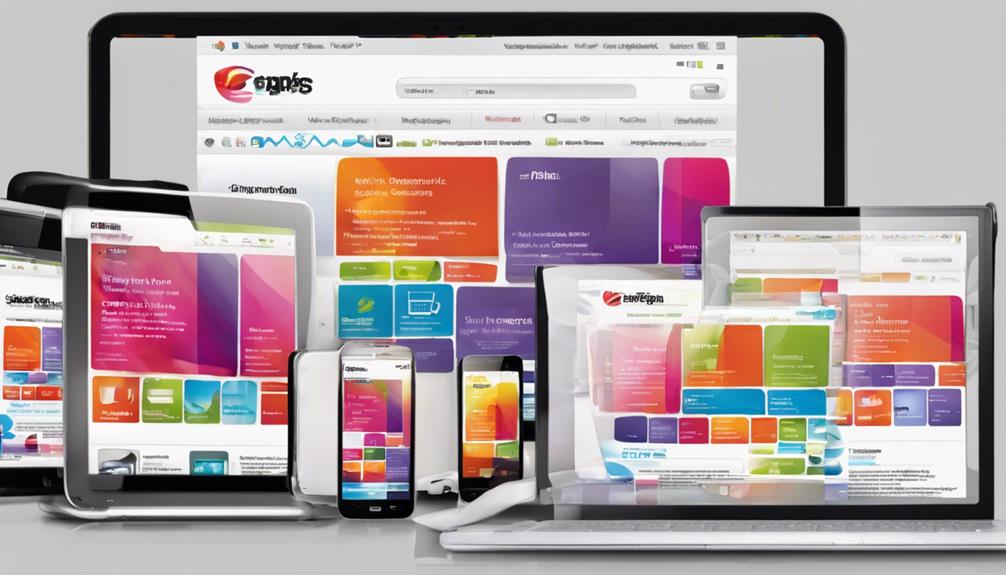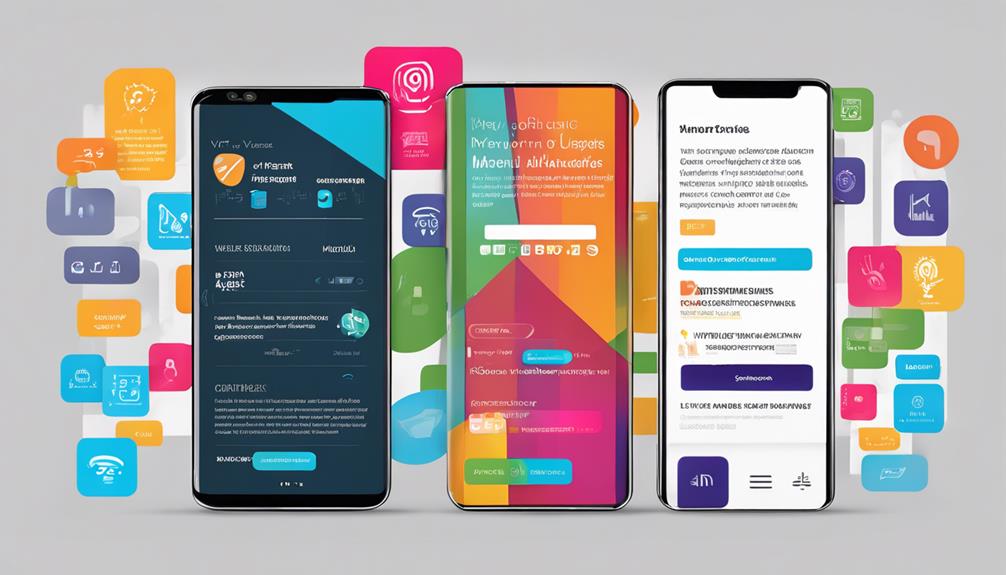You know that mastering mobile SEO is crucial for service business websites, especially with more than half of your potential clients browsing on mobile devices. So, what can you do to ensure your website meets their expectations and keeps them engaged? It starts with a mobile-friendly design, but there's more to it than just that. You'll want to optimize page load speed and integrate localized SEO strategies, yet the challenge of maintaining accessibility and readability remains. Curious about the most effective ways to address these critical elements? Let's explore how you can optimize your website for mobile success.
Key Takeaways
- Implement responsive design to ensure seamless user experience across all devices, enhancing engagement and conversion rates.
- Optimize site speed by compressing images and using browser caching to keep load times under 3 seconds.
- Prioritize mobile-friendly content with short paragraphs and ample white space for improved readability.
- Optimize local SEO by claiming and enhancing your Google Business Profile, ensuring accurate NAP information.
- Regularly conduct usability testing with tools like Google's Mobile-Friendly Test to identify and address any mobile-specific issues.
Prioritize Mobile-Friendly Design
In the digital landscape, where over 50% of global web traffic comes from mobile devices, prioritizing a mobile-friendly design isn't optional—it's essential. When you optimize your service business website for mobile, you enhance user experience significantly.
Google's Mobile-First Indexing means it primarily uses the mobile version of your site for ranking and indexing, so a responsive design is non-negotiable. Ensure your site adapts seamlessly to different screen sizes, maintaining usability and readability across devices.
Conduct regular usability testing to identify potential pain points for mobile users. Tools like Google's Mobile-Friendly Test can provide insights into how your site performs on mobile devices.
Pay attention to your site's navigation; a clean, intuitive interface can reduce bounce rates and improve user engagement. Implement touch-friendly buttons that are large enough for users to tap easily, without needing to zoom in.
Don't overlook the importance of mobile-optimized content. Shorter paragraphs, bullet points, and concise headlines improve readability.
Ensure images and videos are responsive, adjusting to various screen sizes without compromising quality. Remember, a mobile-friendly design directly influences your site's SEO performance, impacting visibility and driving more organic traffic.
Enhance Page Load Speed
While a mobile-friendly design lays the foundation for a robust user experience, page load speed acts as the linchpin for retaining user engagement. Studies indicate that 53% of mobile users abandon a site if it takes longer than three seconds to load. To ensure your service business website retains visitors, focus on optimizing your page load speed.
Begin by compressing images to reduce file sizes without sacrificing quality. Tools like TinyPNG or ImageOptim can automate this process efficiently.
Next, leverage browser caching. By storing static files such as CSS, JavaScript, and images locally on a user's device, you reduce the need for repeated downloads. Implementing Content Delivery Networks (CDNs) can also significantly enhance load times by distributing your content across multiple locations, reducing the physical distance between users and server resources.
Consider minifying your website's code. Removing unnecessary characters like spaces and comments from HTML, CSS, and JavaScript files can shave precious milliseconds off load times.
Google's PageSpeed Insights is a valuable tool for identifying further optimization opportunities specific to your site. By prioritizing these technical improvements, you not only improve user engagement but also boost your site's SEO performance, as search engines like Google prioritize fast-loading websites.
Implement Responsive Layouts

Responsive layouts are crucial for delivering a seamless user experience across different devices, ensuring your service business site is accessible and appealing on smartphones, tablets, and desktops.
Studies show that 52.2% of all website traffic comes from mobile devices, making a responsive design non-negotiable. By using flexible grids, CSS media queries, and fluid images, you can ensure your website dynamically adjusts to various screen sizes without sacrificing functionality or aesthetics.
Analyzing your site's current layout with tools like Google's Mobile-Friendly Test can provide insights into areas needing improvement. A responsive layout not only enhances user experience but also contributes positively to your SEO.
Google's algorithm prioritizes mobile-responsive sites, improving your search rankings significantly when implemented correctly.
Implementing a responsive design also reduces bounce rates, as users tend to leave sites that don't display well on their devices. This decrease in bounce rate can lead to increased engagement and higher conversion rates.
Consistent design across devices fosters trust and credibility, essential for service businesses aiming to convert visitors into customers. Data indicates that businesses with responsive sites see up to a 30% increase in conversion rates, underscoring the importance of this strategy.
Optimize Local SEO Elements
As you've established a responsive layout, it's time to focus on optimizing local SEO elements to enhance your service business's visibility in local search results.
Begin by claiming and optimizing your Google Business Profile. Accurate and consistent information, such as your business name, address, and phone number (NAP), is crucial. Studies show that 78% of location-based mobile searches lead to an offline purchase, making it essential to ensure your NAP data is correct and matches across all platforms.
Incorporate localized keywords into your website's meta tags, titles, and content. Use tools like Google Keyword Planner to identify high-traffic local search terms relevant to your services. For instance, if you're a plumber in Austin, include phrases like "Austin plumbing services" in your metadata.
Furthermore, encourage satisfied customers to leave positive reviews on platforms like Google and Yelp. Reviews significantly influence local search rankings, with 88% of consumers trusting online reviews as much as personal recommendations.
Use Mobile-Friendly Content

How can you ensure your website content caters effectively to mobile users? Start by prioritizing readability. Short sentences and paragraphs improve readability, especially on smaller screens. Data shows that 57% of mobile users will leave a site if they encounter difficulties reading content. Use a font size of at least 14px and maintain ample white space to prevent clutter.
Next, focus on visual content optimization. Compress images to reduce load times, as 53% of mobile users will abandon a page if it takes longer than three seconds to load. Use responsive design techniques to ensure images and videos scale correctly on different devices. According to Google, responsive websites are more likely to rank higher in search results.
Incorporate interactive elements sparingly. While these can enhance user experience, excessive pop-ups or animations can slow down performance and frustrate users. The technical execution should be seamless, ensuring these elements don't interfere with the content's accessibility.
Lastly, analyze mobile user behavior through tools like Google Analytics. By examining metrics such as bounce rate and session duration, you can identify areas where the content may not be engaging users effectively, allowing you to make data-driven improvements.
Conclusion
To maximize mobile SEO for your service business website, focus on a mobile-friendly design with responsive layouts, as over 52% of users access sites on mobile devices. Improve page load speed by compressing images and enabling browser caching, since 53% of users abandon slow sites. Implement localized SEO by claiming your Google Business Profile and using localized keywords. Ensure readability with short paragraphs and a font size of at least 14px, boosting accessibility and user engagement.


